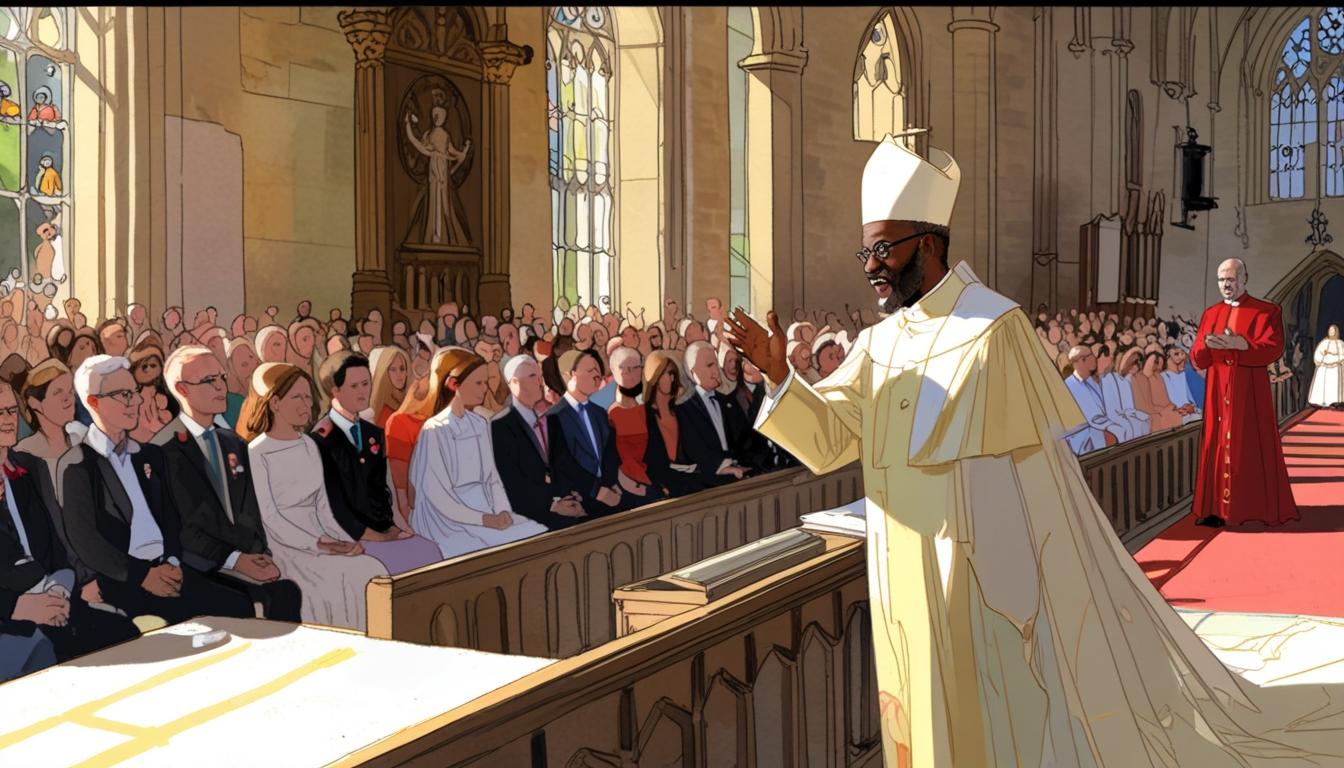As guests entered St George's Chapel on that picturesque May day in 2018, they anticipated a ceremony reminiscent of Prince William and Kate Middleton’s royal wedding. What they encountered instead marked a monumental shift in royal traditions, as the nuptials of Prince Harry and Meghan Markle delivered a vibrant, diverse spectacle that resonated with a distinctly American flair.
The ceremony was not only a celebration of love but also a cultural milestone, heralded by many as one of the most diverse significant events in the Queen's then 66-year reign. The couple's choice of Bishop Michael Curry, head of the Episcopal Church in the United States, to deliver the address, astounded those accustomed to the more reserved sermons typical of Anglican services. Curry's fervent message on love—grounded in the teachings of Martin Luther King Jr. and enriched by African American spirituals—spun a narrative that both captivated the audience and broke from convention.
Robert Lacey, author of "Battle of Brothers," identified Curry as one of the day’s 'heroes.' His animated sermon, which extended well beyond the expected six-minute timeframe, drew laughter and gasps from attendees, revealing a range of upper-class British reactions that showcased the stark cultural divide. The royal family, known for their reserved demeanour, were visibly taken aback—particularly Zara Tindall, whose wide-eyed expression captured the incredulity of the moment. This unexpected reaction quickly became emblematic of the day's blend of tradition and modernity.
As Curry delivered his impassioned address, complete with theatrical gestures and direct engagement with the congregation, the traditional royal etiquette began to unravel. Notably, the typically stoic Camilla, Duchess of Cornwall, had her shoulders visibly shaking with suppressed laughter, while Kate Middleton was observed giving her stepmother-in-law a cautionary “side-eye.” This was in stark contrast to the self-reflective style of the previous sermon delivered by Bishop Richard Chartres at William and Kate's wedding, which leaned more towards solemnity and reverence.
In this unique context, social media erupted with humorous commentary and memes highlighting the royal family's varied responses. Some guests, including prominent figures like Elton John and Oprah Winfrey, watched in bemusement, likely sharing in the collective surprise of witnessing such an exuberant display of faith and passion within a royal setting.
By choosing a wedding sermon that emphasised the transformative power of love, Harry and Meghan marked a departure from centuries of British royal wedding traditions. Many observers noted the event's significant cultural implications, with reflections on its potential to reshape future royal ceremonies. Indeed, the juxtaposition of Bishop Curry's lively address against the backdrop of English heritage symbolised a broader shift towards inclusivity within the monarchy.
As events unfolded, the reactions captured by cameras told a compelling story—a blend of disbelief, humour, and an overpowering sense of joy, encapsulating a moment that was both historic and revolutionary. The day concluded with a palpable sense that the royal wedding had set a new precedence, challenging future expectations and opening the door to a more culturally diverse representation of the monarchy.
This transformational wedding showcased not only Harry and Meghan's love story but also a shift in the royal narrative that continues to resonate within public discourse, reflecting evolving British society and royal identity.
Reference Map
- Paragraph 1: [1]
- Paragraph 2: [1], [7]
- Paragraph 3: [1], [5], [4]
- Paragraph 4: [2], [6]
- Paragraph 5: [1], [4], [6]
- Paragraph 6: [1], [3], [5]
- Paragraph 7: [1], [7]
- Paragraph 8: [1], [2], [4]
Source: Noah Wire Services
